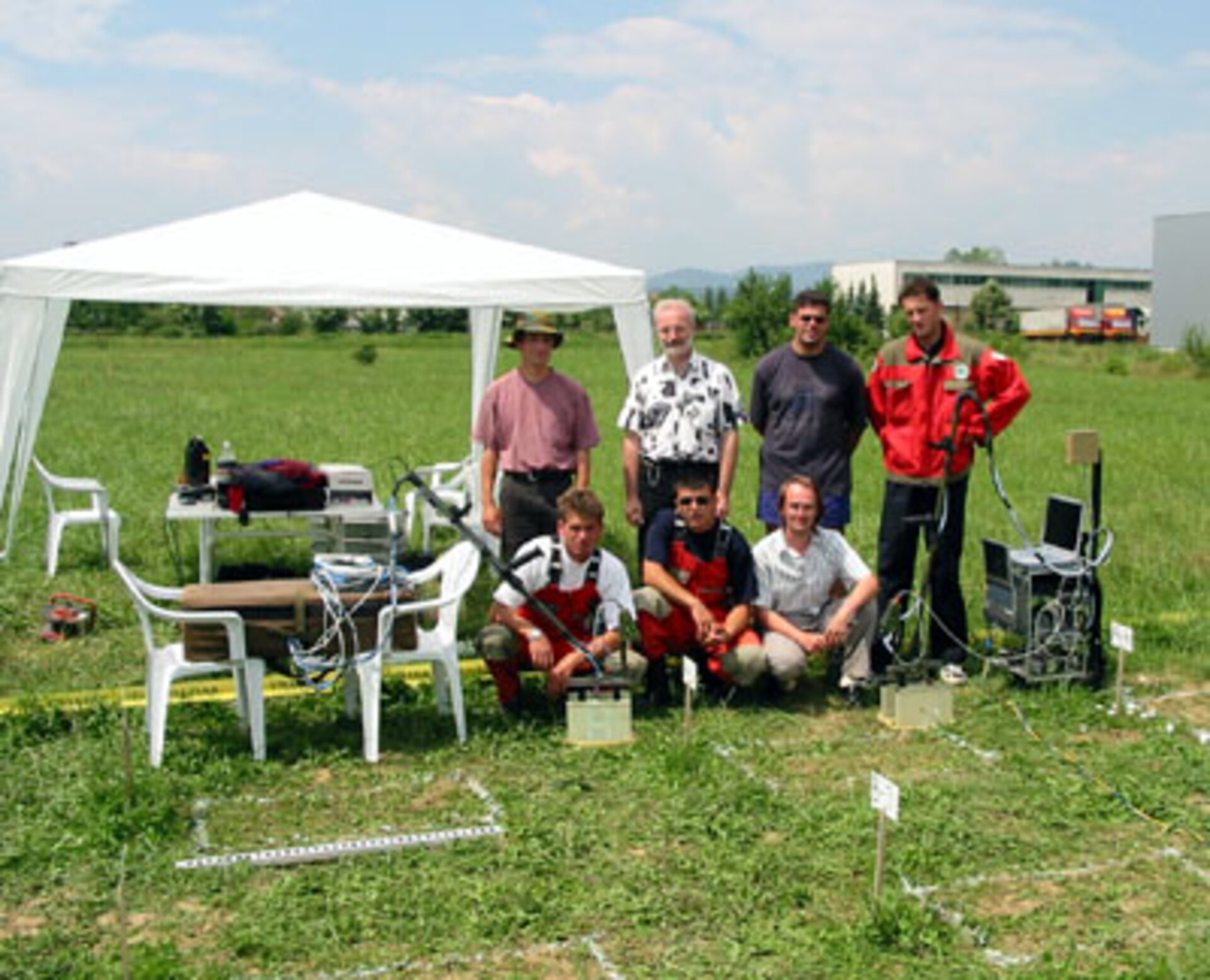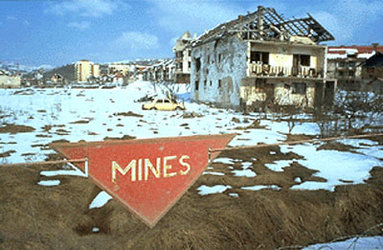HOPE on trial in Bosnian mine fields
The HOPE mine detector has now been under test, near Sarajevo in Bosnia, for the past three weeks by an important local mine clearing non-governmental organisation, Norwegian People's Aid (NPA).
This mine detector has been developed under the Handheld Operational Demining System (HOPE) project, financed primarily by the European Union, to support humanitarian demining operations. ESA is providing assistance for the ground penetration radar (GPR) segment of the mine detector under its Technology Transfer Programme, which encourages industry to use technology developed for space in other fields.
HOPE is a three-sensor system mine detector. It first uses a classical metal detector to locate potential mines and then, once a possible landmine is located, HOPE’s two additional sensors come into operation: the ground penetration radar (GPR) and the radiometer. The radiometer ‘looks’ into the first 3 cm of earth while the GPR can penetrate up to 30 cm of earth to enable the data processing section of the radiometer and the GPR to produce a three-dimensional image of what has been found. This enables mine clearers to assess accurately and quickly whether what has been located is a land mine or just a harmless piece of metal.
Doctor Braun from RST, one of the leading companies in the HOPE project, says that previous tests carried out in the factory, and by the German and Belgium military and the EU research centre in ISPRA, have all given very promising results. “However, this is the first time that we test HOPE with real land mines and with the end users, the demining operators here in Bosnia.”
Braun emphasis that “the NPA’s participation in the HOPE project has been outstanding. They have prepared 300 mine test fields with land mines, un-exploded ordinances and other ‘leftovers’ of war. This has made it possible to verify HOPE’s performance in a real environment.”
At present, conventional land mine detection is still carried out in the same way as it was 60 years ago, by using a simple metal detector and then prodding to locate metallic items. This is very time consuming and not very efficient, as the metal detector signals all the metal objects found, much of which is harmless debris. Thanks to its three-sensor system, the HOPE mine detector will be able to ‘see’ whether the object found is harmless or not, thus significantly reducing the time it takes to locate mines.
Testing and preparing HOPE for production

HOPE is undergoing testing by the industrial team involved together with NPA’s field staff. Altogether 300 test sites have been prepared by NPA in Bosnia, each measuring 50 cm by 100 cm. The team carrying out the demining are not told what, if anything, is buried in these plots, so that an objective and honest evaluation of HOPE can be carried out. Once the three-week testing period is completed the results will be analysed and evaluated.
“We plan to complete this phase of the project within the coming months. But as we already know from previous testing that thanks to the new technology being used, HOPE should have a much higher detection rate than a conventional metal detector, we are already planning for the final phase” continues Braun.
“Our plan is a two-year project to produce a final HOPE-2 prototype. This is ambitious planning, but we are dealing with a very serious problem and we have to move as fast as we can. Our technology is now at such a level that providing we receive sufficient funding, by mid next year we may be able to have a small number of HOPE-2 prototypes ready to test in normal de-mining operations during a further two to five month testing period. This field usage should provide us with sufficient feedback to produce a final prototype which can be put into production at the end of this two-year time frame.”
Pierre Brisson, Head of ESA’s Technology Transfer Programme, has already confirmed that ESA will continue to play its part in supporting the HOPE project. If Braun’s plan can be followed a new generation of mine detectors could a be ready for use before the end of 2003.





